Jaguar E-Pace vs Jeep Compass – Which model is better for everyday use?
Two cars, one duel: Jaguar E-Pace meets Jeep Compass.
Which one wins in performance, efficiency and value for money? Find out now!
Costs and Efficiency: Price and efficiency are often the first things buyers look at. Here it becomes clear which model has the long-term edge – whether at the pump, the plug, or in purchase price.
Jaguar E-Pace has a hardly perceptible advantage in terms of price – it starts at 32400 £, while the Jeep Compass costs 34200 £. That’s a price difference of around 1800 £.
Fuel consumption also shows a difference: Jaguar E-Pace manages with 1.40 L and is therefore convincingly more efficient than the Jeep Compass with 2 L. The difference is about 0.60 L per 100 km.
As for range, the Jeep Compass performs convincingly better – achieving up to 500 km, about 431 km more than the Jaguar E-Pace.
Engine and Performance: Under the bonnet, it becomes clear which model is tuned for sportiness and which one takes the lead when you hit the accelerator.
When it comes to engine power, the Jaguar E-Pace has a a bit edge – offering 269 HP compared to 240 HP. That’s roughly 29 HP more horsepower.
Both models accelerate almost equally fast – 7.30 s from 0 to 100 km/h.
In terms of top speed, the Jaguar E-Pace performs minimal better – reaching 211 km/h, while the Jeep Compass tops out at 200 km/h. The difference is around 11 km/h.
There’s also a difference in torque: Jaguar E-Pace pulls evident stronger with 540 Nm compared to 345 Nm. That’s about 195 Nm difference.
Space and Everyday Use: Beyond pure performance, interior space and usability matter most in daily life. This is where you see which car is more practical and versatile.
Both vehicles offer seating for 5 people.
In curb weight, Jeep Compass is slightly lighter – 1575 kg compared to 1783 kg. The difference is around 208 kg.
In terms of boot space, the Jeep Compass offers a bit more room – 550 L compared to 494 L. That’s a difference of about 56 L.
In maximum load capacity, the Jeep Compass performs slightly better – up to 1387 L, which is about 217 L more than the Jaguar E-Pace.
When it comes to payload, Jaguar E-Pace somewhat takes the win – 554 kg compared to 470 kg. That’s a difference of about 84 kg.
Who comes out on top?
Overall, the Jeep Compass shows itself to be edges ahead and secures the title of DriveDuel Champion.
It convinces with the more balanced overall package and proves to be the more versatile choice for everyday use.
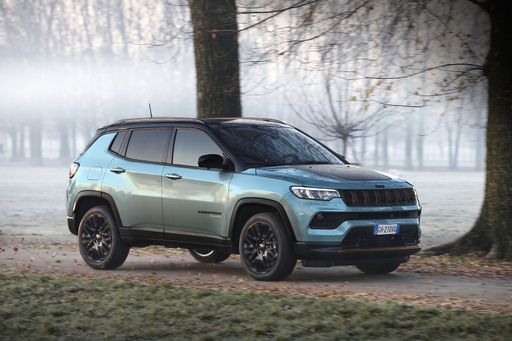
Jeep Compass
Jaguar E-Pace
The Jaguar E-Pace is a compact SUV that combines the brand's signature luxury with a dynamic driving experience. Its sleek design features graceful lines and an assertive stance, making it a standout on any road. Inside, the E-Pace boasts a meticulously crafted interior with high-quality materials and advanced technology, providing both comfort and connectivity for drivers and passengers alike.
details @ media.jaguar.com
@ media.jaguar.com
 @ media.jaguar.com
@ media.jaguar.com
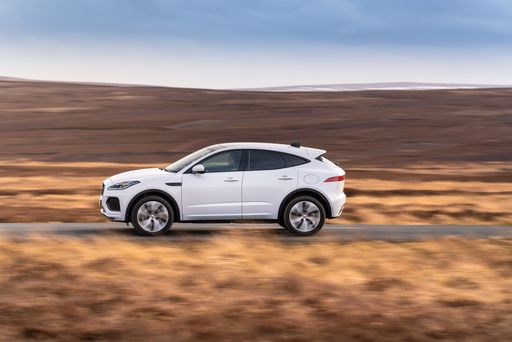 @ media.jaguar.com
@ media.jaguar.com
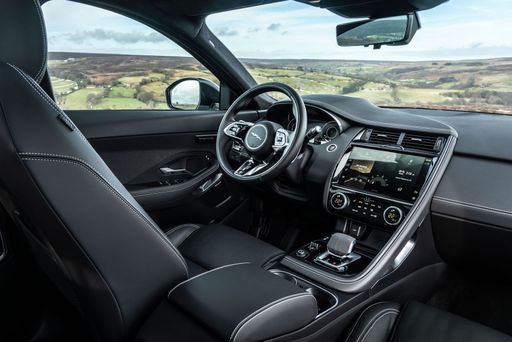 @ media.jaguar.com
@ media.jaguar.com
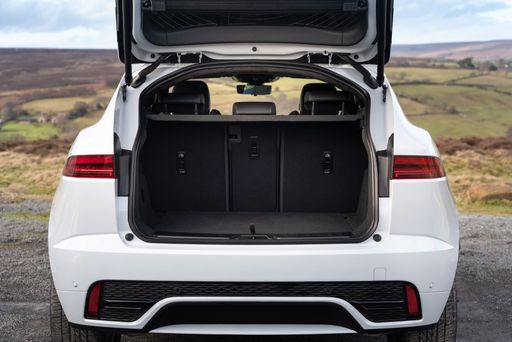 @ media.jaguar.com
@ media.jaguar.com
Jeep Compass
The Jeep Compass combines a rugged aesthetic with modern sophistication, making it a standout choice in the compact SUV segment. Its robust design is complemented by a comfortable interior that offers ample space and cutting-edge technology for a seamless driving experience. Whether tackling urban environments or venturing off-road, the Compass provides versatility and reliability, embodying the adventurous spirit synonymous with the Jeep brand.
details @ media.stellantis.com
@ media.stellantis.com
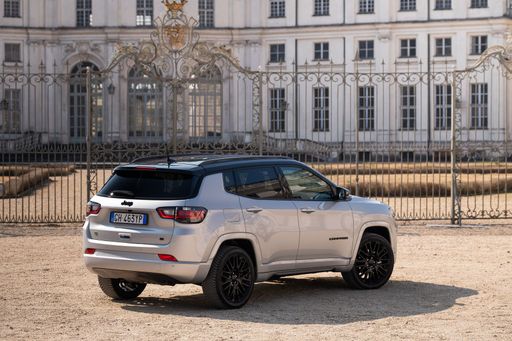 @ media.stellantis.com
@ media.stellantis.com
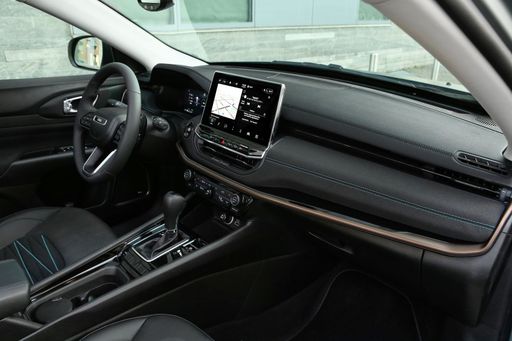 @ media.stellantis.com
@ media.stellantis.com
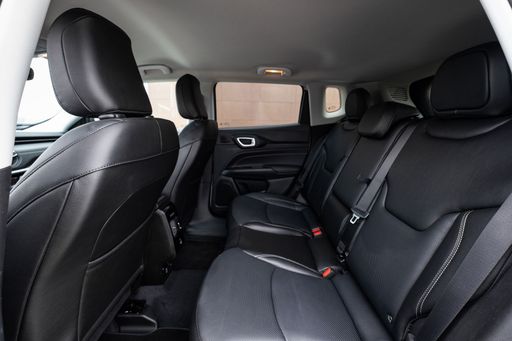 @ media.stellantis.com
@ media.stellantis.com
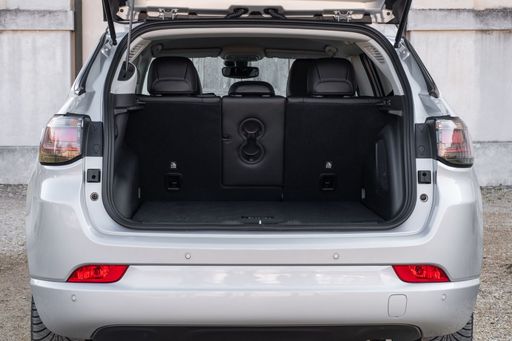 @ media.stellantis.com
@ media.stellantis.com

|

|
|
|
|
Costs and Consumption |
|
|---|---|
|
Price
32400 - 56100 £
|
Price
34200 - 46900 £
|
|
Consumption L/100km
1.4 - 8.2 L
|
Consumption L/100km
2 - 5.9 L
|
|
Consumption kWh/100km
-
|
Consumption kWh/100km
17.50 kWh
|
|
Electric Range
69 km
|
Electric Range
36 - 500 km
|
|
Battery Capacity
11.50 kWh
|
Battery Capacity
74 kWh
|
|
co2
33 - 185 g/km
|
co2
0 - 133 g/km
|
|
Fuel tank capacity
56 - 67 L
|
Fuel tank capacity
36 - 55 L
|
Dimensions and Body |
|
|---|---|
|
Body Type
SUV
|
Body Type
SUV
|
|
Seats
5
|
Seats
5
|
|
Doors
5
|
Doors
5
|
|
Curb weight
1783 - 2173 kg
|
Curb weight
1575 - 2198 kg
|
|
Trunk capacity
494 L
|
Trunk capacity
420 - 550 L
|
|
Length
4395 mm
|
Length
4404 - 4552 mm
|
|
Width
1984 mm
|
Width
1819 mm
|
|
Height
1648 mm
|
Height
1629 - 1675 mm
|
|
Max trunk capacity
1170 L
|
Max trunk capacity
1230 - 1387 L
|
|
Payload
497 - 554 kg
|
Payload
465 - 470 kg
|
Engine and Performance |
|
|---|---|
|
Engine Type
Plugin Hybrid, Diesel MHEV, Petrol MHEV
|
Engine Type
Petrol MHEV, Plugin Hybrid, Electric
|
|
Transmission
Automatic
|
Transmission
Automatic
|
|
Transmission Detail
Automatic Gearbox
|
Transmission Detail
Dual-Clutch Automatic, Automatic Gearbox, Reduction Gearbox
|
|
Drive Type
All-Wheel Drive, Front-Wheel Drive
|
Drive Type
Front-Wheel Drive, All-Wheel Drive
|
|
Power HP
160 - 269 HP
|
Power HP
130 - 240 HP
|
|
Acceleration 0-100km/h
7.3 - 10.5 s
|
Acceleration 0-100km/h
7.3 - 10.3 s
|
|
Max Speed
190 - 211 km/h
|
Max Speed
180 - 200 km/h
|
|
Torque
260 - 540 Nm
|
Torque
230 - 345 Nm
|
|
Number of Cylinders
3 - 4
|
Number of Cylinders
4
|
|
Power kW
118 - 198 kW
|
Power kW
96 - 177 kW
|
|
Engine capacity
1498 - 1998 cm3
|
Engine capacity
1199 - 1469 cm3
|
General |
|
|---|---|
|
Model Year
2024
|
Model Year
2024 - 2025
|
|
CO2 Efficiency Class
B, G
|
CO2 Efficiency Class
D, B, A
|
|
Brand
Jaguar
|
Brand
Jeep
|
What drive types are available for the Jaguar E-Pace?
The Jaguar E-Pace is offered with All-Wheel Drive or Front-Wheel Drive.
The prices and data displayed are estimates based on German list prices and may vary by country. This information is not legally binding.
